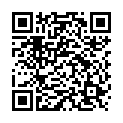|
|
|
| Module code: E902 |
|
3V+1U (4 hours per week) |
|
5 |
| Semester: 9 |
| Mandatory course: yes |
Language of instruction:
English/German |
Assessment:
Oral examination, project work
[updated 12.03.2010]
|
E902 Electrical Engineering, Master, ASPO 01.10.2005
, semester 9, mandatory course
|
60 class hours (= 45 clock hours) over a 15-week period.
The total student study time is 150 hours (equivalent to 5 ECTS credits).
There are therefore 105 hours available for class preparation and follow-up work and exam preparation.
|
Recommended prerequisites (modules):
None.
|
Recommended as prerequisite for:
|
Module coordinator:
Prof. Dr.-Ing. Dietmar Brück |
Lecturer:
Prof. Dr.-Ing. Dietmar Brück
[updated 13.03.2018]
|
Learning outcomes:
The module Image Processing and Pattern Recognition aims to teach students how systems theory can be applied to tackle problems in image processing. Students will acquire the skills needed to assess the interaction of hardware and software components in image processing systems. After completing this course, students will have the skills required to select image processing and pattern recognition techniques for specific practical applications and to deploy suitable methods of image information extraction.
As the module includes authentic applications drawn from the field of quality assurance, students will be taught the practically relevant criteria that need to be fulfilled in such cases.
[updated 12.03.2010]
|
Module content:
1.Overview of image processing algorithms
2.Review of camera types, lighting, frame grabbers, system software
3.Pattern recognition, neural networks
4.Robot vision
5.Special research-based applications: Contour tracking, surface inspection,
integrity checking, security issues, analysis of moving images in medical
technology
[updated 12.03.2010]
|
Teaching methods/Media:
Lecture notes, overhead transparencies, video projector, PC, CD
[updated 12.03.2010]
|
Recommended or required reading:
At the beginning of the course, students will be issued with a CD containing all the teaching material used in this module. The CD also contains a complete and regularly updated list of recommended reading materials.
[updated 12.03.2010]
|


